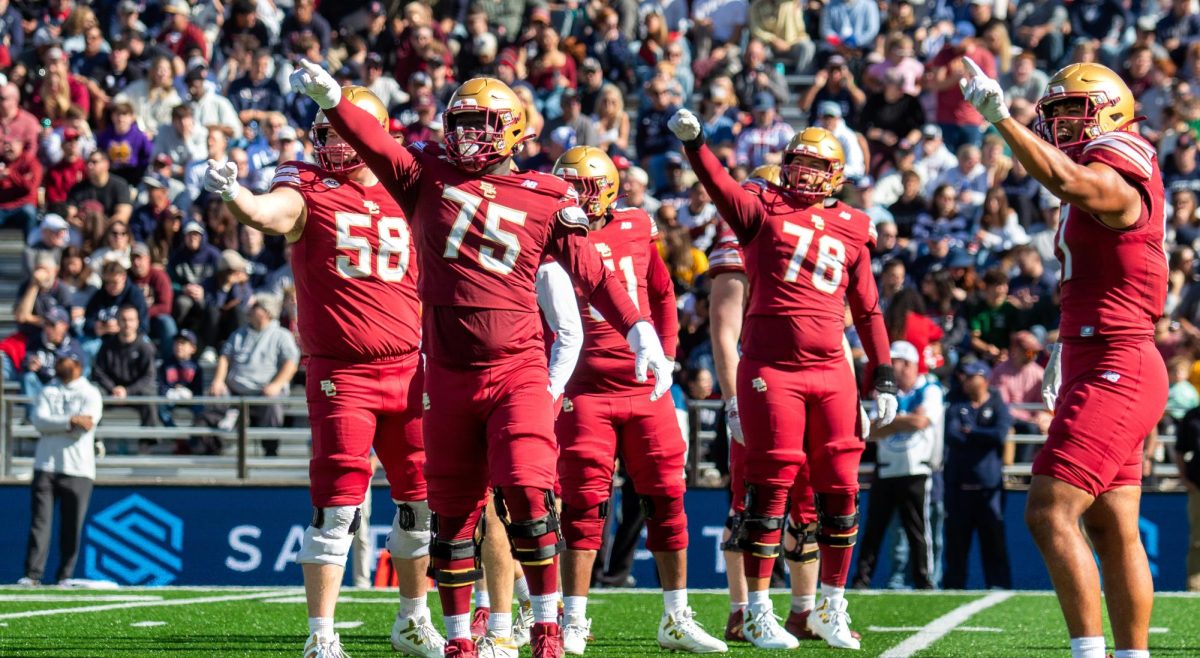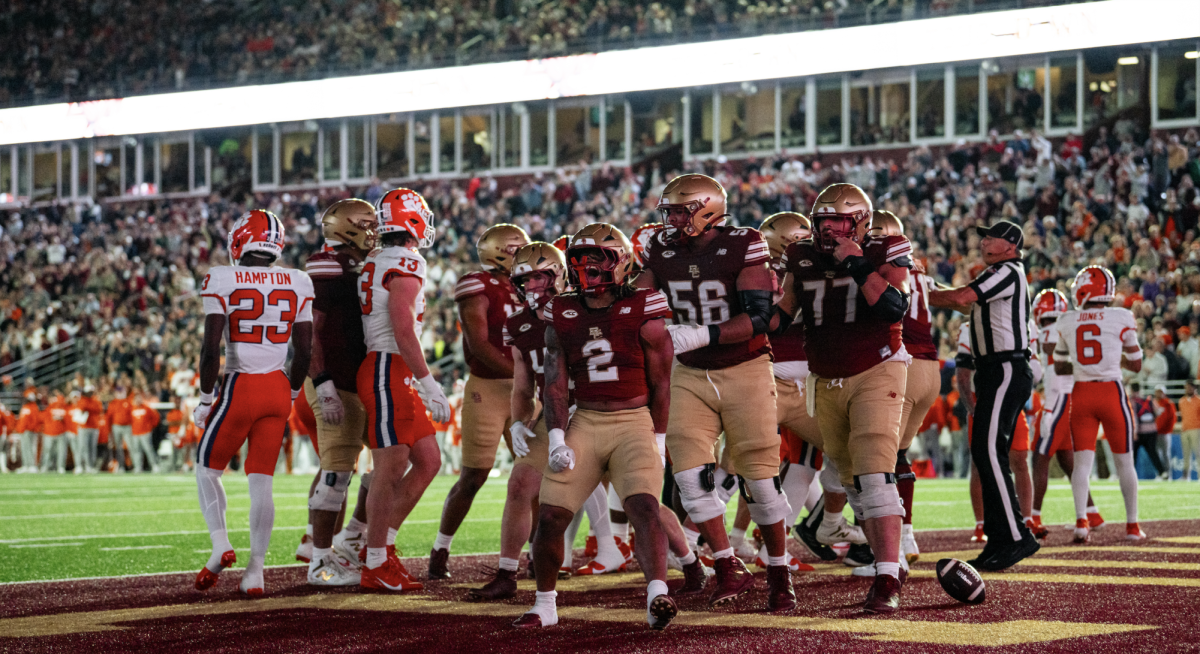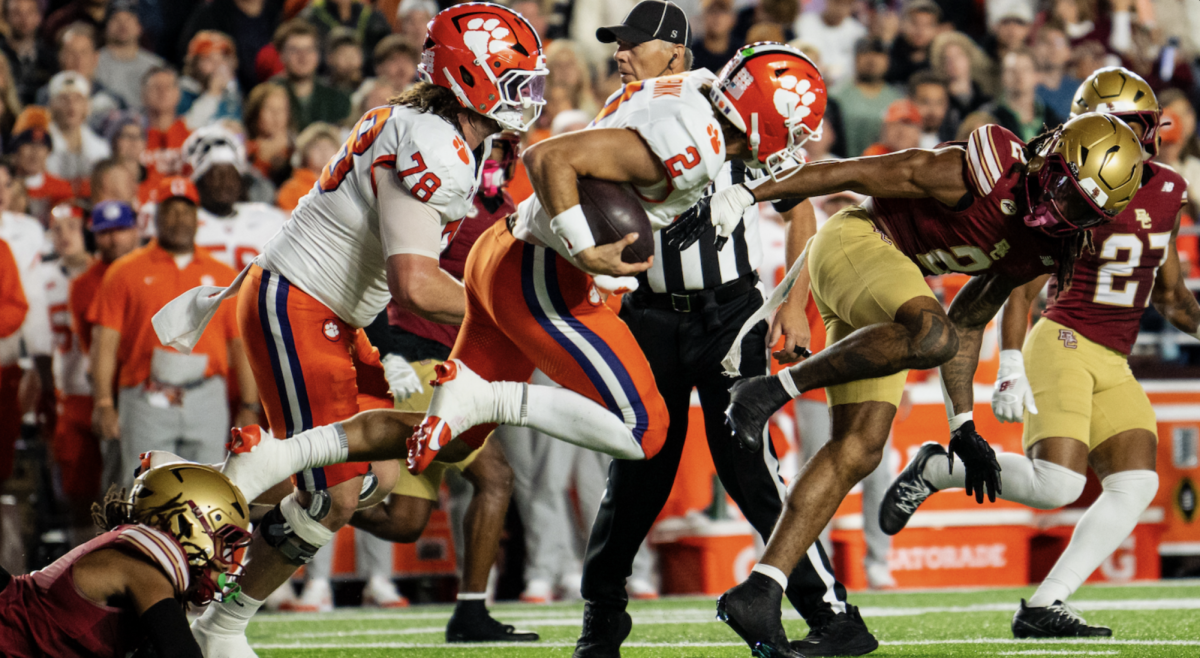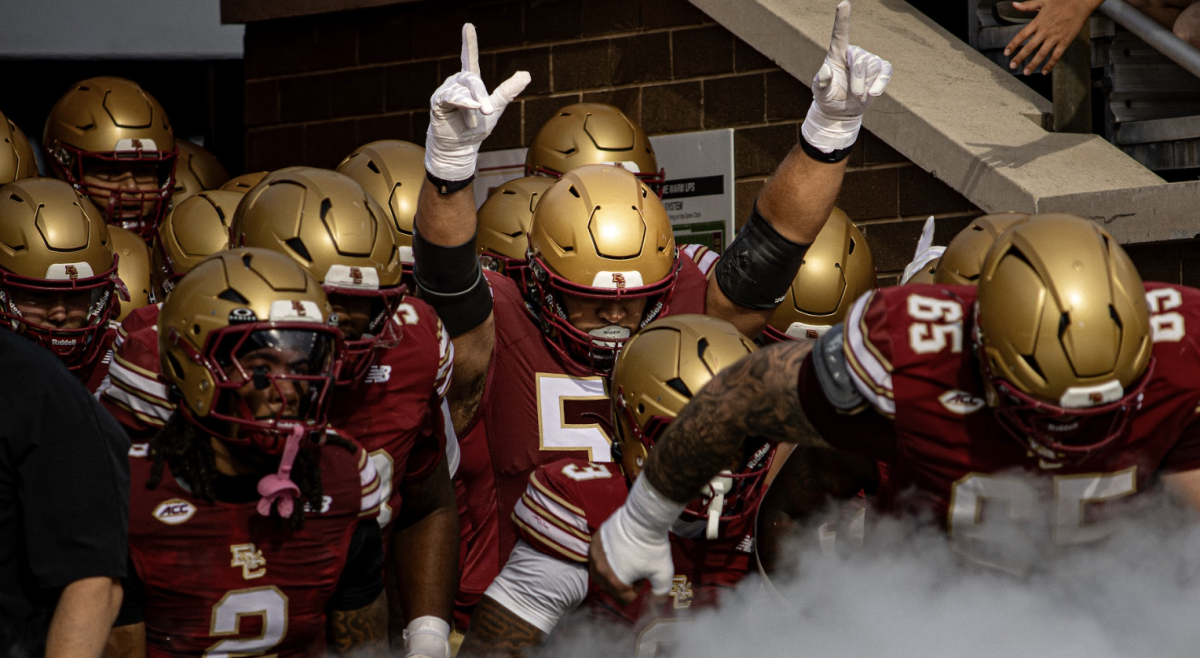Five years ago, the sports blog Grantland did a story on Kevin Kelley, a high school football coach wrestling with the bounds of reason—Kelley’s team never punted, never attempted to return punts, and only attempted onside kicks. In the eyes of conventional wisdom surrounding the game of football, Kelley was very much the odd man out. For most people, a mindset of when to punt or go for it is very clear. There aren’t a lot of blurred lines or general confusion. In recent years, however, college football and NFL coaches have loosened up and began moving toward a less conservative approach.
Perhaps most surprising—in a very positive shift—is the fact that Boston College football head coach Steve Addazio is part of the movement. Addazio, notorious in years past for an offense that is especially conservative and often finds itself in third-and-long situations, opted to go for it on fourth down four separate times against Louisville on Saturday, finding success twice. He’s already kept the offense on the field to go for it on fourth down 18 times through seven games, numbers that put the Eagles on track to make 30 attempts by the end of the season. That would replicate last year’s mark that was good for seventh in the country, and it would be a nearly 30 percent increase in attempts from 2016.
Addazio is one of just several coaches that have embraced going for it more often. Backed up by analytics and numbers that have said for years that conventional wisdom is wrong—Kelley’s Pulaski Academy football team is one such example, albeit dramatic, of what keeping the defense on the field and treating each fourth down as a chance to keep driving can do. It’s unlikely any college coach will ever reach that level of aggressiveness, especially with high school football being easier across the board with plenty of less athletic or skilled players mixed in with future Division I recruits, but the numbers do suggest that this upward trend is a smart and fitting one—it’s “low-hanging fruit” in terms of the analytics revolution sweeping through sports.
On Saturday, LSU head coach Ed Orgeron’s willingness to go for it on fourth secured his team a massive win over No. 2 Georgia. The then-13th-ranked Tigers were coming off an eight-point loss to Florida, one in which a decision to kick a short field goal rather than attempt a fourth-and-short conversion cost them a chance at a marquee win. The third-year head coach made a necessary adjustment, though, and used four successful fourth down conversions to wear out a Bulldogs defense that gave up 17 points in the fourth quarter of a 36-16 loss.

Yes, converting four-of-four is an impressive and oft unrepeatable success rate, but each time, Orgeron made the right decision. At some point in the not so distant future, what Orgeron did will be understandable and unnoticeable. The last few years have seen a distinct uptick in conversion attempts. Coaches around the country are finally making the right choices—especially in terms of not settling for a field goal, which is always far from automatic with the way kickers have fluctuated.
BC is a prime example of a team that should, in most cases, go for it. Place kicker Colton Lichtenberg is 2-for-2 on field goal attempts this season after missing four games with an injury, but his track record is far from good. Lichtenberg was just 12-for-20 on field goals last season and was a woeful 2-for-8 from 40-plus yards. His backup and potential future replacement, John Tessitore, missed four extra points in 18 tries, so it’s not as if Addazio has had the ability to turn to a kicker on fourth downs—he’s only opted to kick a field goal three times in seven games.

This isn’t a new trend, though, as the Eagles have struggled to recruit a quality place kicker in years past. Three seasons ago, BC attempted just 11 field goals and connected on six of them the entire season, and you have to back to 2013 to find an Eagles kicker with any consistent success, as it was Nate Freese who punctuated his four-year career on the Heights with a perfect 20-for-20 rate. So, instead of lining up for likely misses, Addazio has shifted his philosophy. His worst season with BC, the awful 2015 campaign in which the Eagles finished 3-9 and didn’t win a single conference game, saw just 13 attempts on fourth down. BC finished 111th in the country in the number of attempts and struggled mightily in the minimal tries, too—it converted just five of them, a roughly 38 percent success rate that was good for 108th. The conservative coach has evolved with the game, though. The Eagles’ 18 attempts thus far is tied for seventh in the nation, a 100-plus spot jump from three years prior, and their 50 percent success rate is right around the mean.
Without a consistent kicker, BC’s tendency to go for it—it averages nearly three attempts per game—has slightly eased the burden on the defense’s shoulders. The Eagles have struggled mightily on third downs, converting under 40 percent of their attempts, and the drives that stall out quickly force BC’s defense back on to the field. This has happened with regularity, as BC ranks 107th in time of possession, consistently holding the ball for considerably less time than the opposition. Going for it on fourth down helps somewhat, and it’s a credit to Addazio that he has managed to make the adjustment.
BC’s four attempts against the Cardinals were clear instances of what can go right, and what can go wrong. The first one came on 4th-and-5 on the Louisville 27-yard line—a 44-yard field goal that was beyond Lichtenberg’s distance. Anthony Brown’s pass to Travis Levy fell incomplete, though, and Louisville’s Jawon Pass engineered a touchdown drive in the other direction that nudged the Cardinals ahead, 20-14. Even after that backfire, Addazio came back to going for it on fourth down, and it actually worked.
Brown had a 1-yard sneak to move the chains on 4th-and-1 from BC’s 49-yard line, a conversion coming out of halftime that set the tone for the Eagles. The drive stalled after a sack, and the next attempt came from the Cardinals’ 5-yard line. BC was up, 24-20, and running back David Bailey couldn’t punch it in on another 4th-and-1, but the call was still the right one. The momentum was firmly with the Eagles, having forced Louisville into a three-and-out to get the ball. By going for it, there was two possible outcomes, both better than settling for three points—BC would either convert and likely score a touchdown, or it’d pin the Cardinals offense, which was coming off a rough drive, in the shadow of their own end zone.
The final conversion was a crushing blow for the Cardinals. BC still led by just four points and were facing a 4th-and-4 from Louisville’s 23-yard-line. Instead of attempting a 40-yard Lichtenberg field goal—one that would keep the Cardinals within a score—Addazio kept the offense out, and Brown rewarded him with a 20-yard pass to Levy. A pair of Bailey runs later, the Eagles were celebrating a 31-20 lead that allowed them to coast the rest of the way.
These examples are just from the last game, but they’re reflective of a coach, who, like Orgeron, has proven he knows when the time is right to push forward. Addazio has been rightly criticized in years past for an uninspired offense—the number of three-and-outs in startling similar fashions surely is a product of the run, run, and pass choice. Still, the past two years have seen a growth in his decision-making, as he has strayed away from the “safe” punting choice that removes any media criticism. Yes, he’s been forced into this predicament because of a general lack of trust in his kickers, but he’s run with it and made timely choices to go for it on fourth down.
College football as a whole has seen an increase in attempts—Air Force, a run-heavy triple-option team, is on pace to try 50 fourth-down conversions, a mark that is nearly an attempt per game higher than last year’s leaders in Florida Atlantic and Northwestern. It’s a refreshing shift that should, in several years time, be regarded as totally normal. Kelley’s strategy might seem drastic, but the coach that never punts presides over a team that has won several state championships in a dominant manner. It’s worth considering that the conventional wisdom could simply be wrong, and Addazio and Oregon are two of many college coaches that are catching on.
Featured Image by Michael Dwyer / AP Photo













